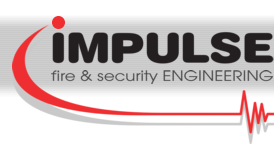

Fire detection & alarm systems
Conventional, addressable, analogue addressable, Bi-wire and radio, using flame, heat, flammable or toxic gas, carbon monoxide & smoke detection systems, both aspirated & point form the basis of the automatic systems available today. The majority will have manual intervention devices as life safety forms the basis of the engineering.
All fire prevention and protection systems whether simple manual only call point and alarm sounder installations to very sophisticated analogue systems with substantial signal processing being carried out in the detection device start their life on the firm foundation of a risk assessment (regulatory reform fire safety order 2005 – mandates). The assessment need only be as complicated as the risk being protected. Life first and property & assets following.
Impulse Engineering have been advising clients, designing systems, procuring equipment from a wide range of suppliers, installing as a standalone task or part of a construction team; delivering turnkey solutions and support for the owner through its design life and sometimes into the next generation (we have a number of client sites where we have installed & upgraded three times over two and a half decades).
Extinguishing fires is a reactive second stage in fire engineering for a specific risk. Gaseous suppression systems: FM200®, Argonite, IG55, Carbon Dioxide, and more environmentally friendly alternatives such as fine water spray and inert gases. Since the ban was introduced on the manufacture of fire extinguishing gases that contain CFCs (for example halon 1301) the range of extinguishing agents available has increased dramatically. Precise selection is required to apply the most appropriate agent to any application / risk.
BS5839 Part 1 requires a full assessment of the requirements of the code and the DDA (Disability Discrimination). An assessment is always undertaken during design. Compliant solutions can then be engineered into the system using a range of equipment from sounder / beacons with high light intensity output to personal vibrating pagers or vibrating pads for hotel accommodation. Disabled refuges and fire telephone systems are often needed as part of an overall fire and emergency strategy.
The management of larger and complex systems is an easier task these days for building operators and owners. Data networks, IP infrastructure and GSM/GPRS public switched telephony can be used to move information in a fast secure way. Larger sites can easily be networked and managed with client/server workstation architecture. 2 & 3D graphical user interfaces present clear and precise information to operators with priority graded actions. Take a look at www.impulse-eng.com/taktis for the next generation of alarm control and management tools.
Systems we can provide
- Conventional fire detection and alarm systems
- Analogue fire detection and alarm systems
- Gaseous extinguishing systems
- Portable extinguishers, dry risers & sprinklers
- Room integrity (door fan) testing
- Aspirating smoke detection systems
- Point & aspirating gas detection systems
- Intrinsically safe equipment & areas
- Radio based fire detection and alarm systems
- Complete or partial protection using TEMPEST & EMS filtering
Legislation & applicable standards
- BS5839-1:2017, BAFE SP203-1 V7 September 2016, COFA (Chief fire officers association) – Sept 10
- NSI FSQS 121 V8 Quality Assessment Schedule to BS EN ISO 9001:2015 - NSI Fire Gold Scheme
- BS 5588: PART 0: 1996 - Fire Precautions in the design, construction and use of buildings: Guide to fire safety codes of practice for particular premises / applications
- DFRMO requirements, JSP426 and Spec 005
- The Disability Discrimination Act






